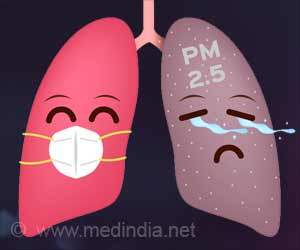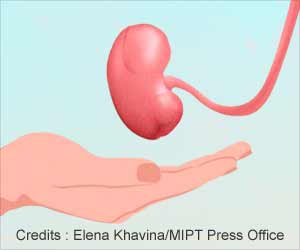Air pollution exposure due to the dust blown in from the Sahara desert across the Southeast U.S. warns of a growing risk to infants and children in many parts of the world, reports a new study.

"Africa and other developing regions have made remarkable strides overall in improving child health in recent decades, but key negative outcomes such as infant mortality remain stubbornly high in some places," said senior study author Marshall Burke, an associate professor of Earth system science in Stanford's School of Earth, Energy & Environmental Sciences. "We wanted to understand why that was, and whether there was a connection to air pollution, a known cause of poor health."
Understanding airborne danger
Children under 5 are particularly vulnerable to the tiny particles or particulate in air pollution that can have a range of negative health impacts, including lower birth weight and impaired growth in the first year of life. In developing regions, exposure to high levels of air pollution during childhood is estimated to reduce overall life expectancy by 4-5 years on average.
Quantifying the health impacts of air pollution - a crucial step for understanding global health burdens and evaluating policy choices - has been a challenge in the past. Researchers have struggled to adequately separate out the health effects of air pollution from the health effects of activities that generate pollution. For example, a booming economy can produce air pollution but also spur developments, such as lower unemployment, which leads to better healthcare access and improved health outcomes.
To isolate the effects of air pollution exposure, the Stanford-led study focuses on dust carried thousands of miles from the Bodélé Depression in Chad - the largest source of dust emissions in the world. This dust is a frequent presence in West Africa and, to a lesser extent, across other African regions. The researchers analyzed 15 years of household surveys from 30 countries across Sub-Saharan Africa, covering nearly 1 million births. Combining birth data with satellite-detected changes in particulate levels driven by the Bodélé dust provided an increasingly clear picture of poor air quality's health impacts on children.
Advertisement
The researchers found that a roughly 25 percent increase in local annual mean particulate concentrations in West Africa causes an 18 percent increase in infant mortality. The results expand on a 2018 paper by the same researchers that found exposure to high particulate matter concentrations in sub-Saharan Africa accounted for about 400,000 infant deaths in 2015 alone.
Advertisement
For example, the concentration of dust particulate matter across Sub-Saharan Africa is highly dependent on the amount of rainfall in the Bodélé Depression. Because future changes in rainfall over the Bodélé region due to climate change are highly uncertain, the researchers calculated a range of possibilities for sub-Saharan Africa that could result in anywhere from a 13-percent decline in infant mortality to a 12-percent increase just due to changes in rainfall over the desert. These impacts would be larger than any other published projections for climate change impact on health across Africa.
Safeguarding children against air pollution is nearly impossible in many developing regions because many homes have open windows or permeable roofs and walls, and infants and young children are unlikely to wear masks. Instead, the researchers suggest exploring the possibility of dampening sand with groundwater in the Bodélé region to stop it from going airborne - an approach that has been successful at a small scale in California.
The researchers estimate that deploying solar-powered irrigation systems in the desert area could avert 37,000 infant deaths per year in West Africa at the cost of $24 per life, making it competitive with many leading health interventions currently in use, including a range of vaccines and water and sanitation projects.
"Standard policy instruments can't be counted on to reduce all forms of air pollution," said study lead author Sam Heft-Neal, a research scholar at Stanford's Center on Food Security and the Environment. "While our calculation doesn't consider logistical constraints to project deployment, it highlights the possibility of a solution that targets natural pollution sources and yields enormous benefits at a modest cost."
Source-Eurekalert











